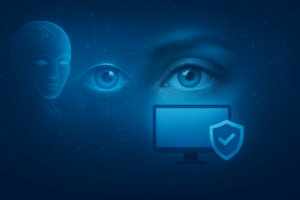Equitable proctoring methods are more important than ever in the quickly changing educational world, especially with the rise of online learning. In traditional and online learning settings, proctoring and monitoring students during exams is crucial for maintaining academic integrity. However, preserving the integrity and inclusivity of the educational system depends on ensuring these practices are just and equal.
Understanding Equitable Proctoring Practices
Equitable proctoring procedures aim to establish an impartial evaluation setting free from bias and needless obstacles so that every student can exhibit their abilities. These procedures are based on openness, accessibility, and justice.
Key Aspects of Equitable Proctoring Practices
- Accessibility: Accessibility is one of the most important factors in equitable proctoring. Exam accommodations should be provided so that students with disabilities can take exams equally with their peers. This might be more time, other forms, or assistive technology. Making proctoring solutions compatible with various gadgets and operating systems is another way to ensure accessibility and prevent students from being negatively impacted by their technology.
- Bias Reduction: Fair proctoring procedures actively seek to eradicate prejudice. This entails creating proctoring software that does not prejudice against students based on their gender, color, financial status, or other personal traits, as well as teaching proctors to identify and lessen their biases. For instance, facial recognition software must be verified and tested to ensure it functions correctly on various demographics.
- Privacy Protection: Ensuring students’ confidentiality is essential to fair proctoring. Students ought to have faith in their data and personal information security. This involves ensuring that proctoring sessions don’t encroach excessively and that any information gathered is safely maintained and utilized solely for authorized purposes. It is important to make transparent privacy policies known to students.
- Consistent Standards: To ensure fairness, all students must adhere to the same proctoring norms and regulations. This consistency makes uniformity in the assessment environment and holds all pupils to the same standards possible. Maintaining this consistency requires the establishment and observance of clear policies and procedures.
- Transparency: Proctoring policies and processes must be transparent. Proctored exams should provide information on monitoring software, data collection methods, and student privacy protection measures. Clear communication ensures that students understand their rights and obligations and fosters trust.
- Technology Considerations: Proctoring tools and software should be designed to accommodate students with varying technology access levels. This includes ensuring that proctoring systems function well on various devices, including those with lower specifications or slower internet connections. Additionally, alternative proctoring methods should be available for students needing access to the required technology.
The Challenges of Equitable Proctoring
Implementing equitable proctoring practices comes with its own set of challenges. These challenges must be addressed thoughtfully to ensure that proctoring systems are fair and inclusive.
- Technological Barriers: Not all students have access to high-speed internet or modern devices, which can create disparities in the proctoring experience. Institutions must consider these disparities and provide alternatives or support for students facing technological challenges.
- Privacy Concerns: Proctoring software that involves video monitoring, screen recording, and other surveillance methods can raise significant privacy concerns. Balancing the need for academic integrity with the protection of student privacy requires careful consideration and transparent policies.
- Bias in Proctoring Software: Automated proctoring tools, such as facial recognition and behavior analysis software, can inadvertently introduce bias. These tools must be rigorously tested and validated to ensure they work equally well for all students. Institutions should be aware of the potential for bias and take steps to mitigate it.
- Student Anxiety and Stress: The presence of proctoring can increase anxiety and stress among students, which can negatively impact their performance. Therefore, creating a supportive environment and providing clear information about proctoring procedures can help alleviate some of this stress.
Best Practices for Equitable Proctoring
To address these challenges and ensure equitable proctoring, educational institutions can adopt several best practices:
- Provide Clear Guidelines: Communicate proctoring policies and procedures to students before exams. This includes what to expect, how to prepare, and what accommodations are available.
- Offer Technical Support: Ensure students can access technical support for any issues with proctoring software. This support should be readily available before, during, and after exams.
- Accommodate Diverse Needs: Recognize that students have diverse needs and circumstances. Provide accommodations for students with disabilities and offer alternative proctoring methods for those with technological limitations.
- Regularly Review and Update Policies: Continuously review and update proctoring policies to address new challenges and incorporate feedback from students and faculty. This helps ensure that policies remain fair and relevant.
- Train Proctors and Faculty: Provide training for proctors and faculty on equitable proctoring practices. Therefore, this includes understanding how to apply proctoring standards consistently and recognizing potential biases.
- Respect Student Privacy: Implement proctoring practices that respect student privacy and comply with relevant data protection laws. Be transparent about data collection and usage, and ensure that student data is securely stored.
Summing up
To keep academic assessments inclusive and fair, equitable proctoring procedures are crucial. Educational institutions can provide a proctoring environment that fosters inclusivity for all students by emphasizing accessibility, minimizing bias, safeguarding privacy, maintaining uniform standards, and maintaining transparency. It takes constant work and dedication to overcome the problems of technological limitations, privacy issues, and potential biases in proctoring software. Institutions can maintain the integrity of their assessments. By promoting an equitable and encouraging atmosphere, it is possible. Hence, it is possible to achieve this for all students by implementing best practices and consistently enhancing proctoring rules.










